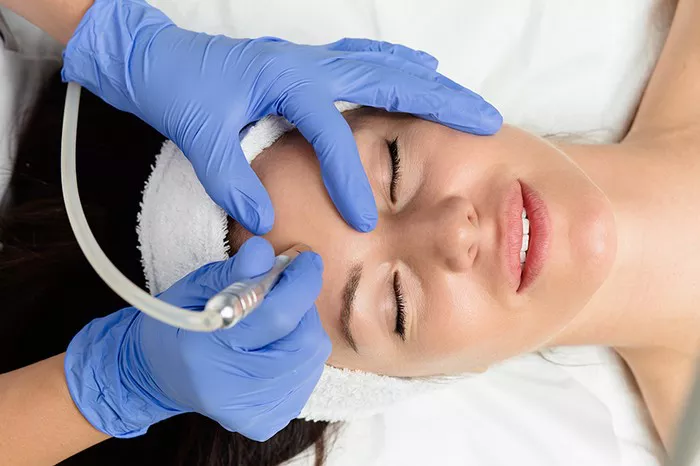Microdermabrasion is a popular cosmetic procedure known for its ability to rejuvenate the skin and improve its overall texture and appearance. However, not all skin types may be suitable candidates for this treatment. In this article, we’ll explore the different skin types and discuss which ones can benefit from microdermabrasion.
Understanding Microdermabrasion
Before delving into which skin types are best suited for microdermabrasion, let’s briefly recap what microdermabrasion is. Microdermabrasion is a non-invasive cosmetic procedure that uses a specialized device to exfoliate the outermost layer of the skin. The procedure helps remove dead skin cells, unclog pores, and stimulate collagen production, resulting in smoother, brighter, and more youthful-looking skin.
Skin Types
There are five primary skin types: normal, dry, oily, combination, and sensitive. Each skin type has its unique characteristics and concerns that need to be taken into consideration when determining the suitability of microdermabrasion.
-
Normal Skin
Normal skin is well-balanced, with a healthy level of moisture and few skin concerns. Individuals with normal skin can generally tolerate microdermabrasion well and may benefit from the treatment to maintain their skin’s texture and clarity.
-
Dry Skin
Dry skin often lacks moisture and can appear dull, flaky, or rough. While microdermabrasion can help exfoliate the dry and dead skin cells, individuals with dry skin should proceed with caution. It’s important to use gentle settings and ensure proper hydration and moisturization before and after the treatment to prevent further dryness and irritation.
-
Oily Skin
Oily skin is characterized by excess sebum production, which can lead to enlarged pores, acne breakouts, and a shiny complexion. Microdermabrasion can be beneficial for individuals with oily skin, as it helps remove dead skin cells and unclog pores. It can also improve the appearance of acne scars and minimize oiliness. However, caution should be exercised to avoid overstimulating the sebaceous glands and exacerbating oil production.
-
Combination Skin
Combination skin is a mix of different skin types, with some areas being oily (typically the T-zone) and others being dry or normal. Microdermabrasion can be suitable for individuals with combination skin, focusing on the areas that would benefit most from exfoliation and pore cleansing. Tailoring the treatment to address specific concerns in different areas of the face can help achieve balanced results.
-
Sensitive Skin
Sensitive skin is easily irritated and prone to redness, inflammation, and reactions to various skincare products and treatments. Microdermabrasion may not be suitable for individuals with highly sensitive skin, as it can potentially cause further irritation and discomfort. However, in some cases, a gentle microdermabrasion treatment using lower suction or crystal intensity levels may be tolerated by individuals with mild sensitivity. It’s crucial to consult with a skincare professional to determine the appropriateness of microdermabrasion for sensitive skin and to customize the treatment accordingly.
Customizing Microdermabrasion for Different Skin Types
Microdermabrasion can be customized to suit different skin types and address specific concerns. Skincare professionals can adjust the intensity, suction levels, and the type of crystals or diamond tips used during the treatment to accommodate various skin needs.
For individuals with dry or sensitive skin, a lower suction level and gentler exfoliation may be recommended to minimize potential irritation. Hydrating and soothing serums or moisturizers can be applied after the treatment to provide additional nourishment and hydration.
Those with oily or acne-prone skin may benefit from a slightly higher suction level to effectively unclog pores and reduce oiliness. Antibacterial or anti-acne serums can be incorporated into the treatment to address acne-related concerns.
Combination skin can be treated by focusing on the specific areas that require exfoliation and pore cleansing. By tailoring the treatment to the individual’s skin type, it’s possible to achieve balanced and harmonious results.
Conclusion
Microdermabrasion is a versatile cosmetic procedure that can benefit individuals with various skin types. While normal and oily skin types generally tolerate microdermabrasion well, caution should be exercised for individuals with dry, sensitive, or combination skin. Customizing the treatment to suit different skin types and addressing specific concerns is essential for optimal results and minimal irritation. Consulting with a skincare professional will help determine the suitability of microdermabrasion for your skin type and develop a personalized treatment plan that addresses your unique needs.

